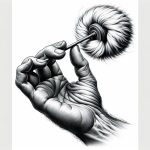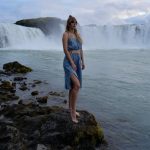When you think about staying comfortable during a workout or a long hike, moisture management in your clothing is key. Modern fabrics, using advanced technologies, are designed to wick sweat away from your skin, keeping you dry and comfortable. You might wonder how materials like polyester and merino wool achieve this remarkable feat. It all comes down to the science of capillary action and the strategic use of hydrophilic and hydrophobic fibers. But what exactly makes these fabrics so effective, and how do you choose the best one for your needs?
Table of Contents
Key Takeaways
- Modern fabrics use advanced moisture-wicking technologies to efficiently manage sweat and keep you dry during physical activities.
- Hydrophilic and hydrophobic fibers in fabrics work together to pull moisture away from the skin and push it out for evaporation.
- Moisture-wicking fabrics like polyester, nylon, and merino wool offer quick-drying, odor-resistant, and breathable properties.
- Cutting-edge fabric innovations enhance comfort, performance, and temperature regulation by maintaining airflow and reducing chafing.
- Sustainable fabric technologies blend recycled fibers with moisture-wicking capabilities, ensuring high performance while minimizing environmental impact.
The Science of Moisture Management
Understanding the science of moisture management is important for grasping how modern fabrics keep you dry and comfortable. At the heart of this science lies fabric engineering, a detailed process that focuses on creating materials specifically designed to handle moisture efficiently.
The goal is to enhance sweat management, making sure that you remain dry even during the most intense activities. This aspect is vital for athletic performance, where staying dry can greatly impact your comfort and endurance.
Fabric engineers utilize advanced technologies and materials to create fabrics with superior moisture-wicking properties. These fabrics are subjected to rigorous performance testing to guarantee they meet high standards. This testing involves simulating real-world conditions to evaluate how well the fabric manages moisture.
Factors like absorption rate, drying time, and breathability are scrutinized. By understanding these elements, you'll appreciate how innovations in fabric engineering contribute to better sweat management.
Mastering this knowledge gives you an edge in selecting the right athletic wear. You'll know what to look for in materials that offer top performance, making sure you stay dry and comfortable. This understanding is crucial for anyone serious about maximizing their athletic performance.
How Moisture-Wicking Works
You might wonder how moisture-wicking fabrics keep you dry. They use capillary action principles to draw sweat away from your skin.
Thanks to advancements in fabric technology, these materials efficiently manage moisture to enhance comfort.
Capillary Action Principles
Capillary action, the main principle behind moisture-wicking fabrics, allows sweat to be drawn away from your skin and spread across the fabric's surface for faster evaporation. When you engage in intense activities, efficient water transport is pivotal. Fabric design leverages capillary action by incorporating tiny channels that pull moisture away. This process not only keeps you dry but also helps regulate your body temperature.
In textile engineering, understanding moisture movement is vital. Engineers design fabrics with specific structures that maximize capillary action. These structures often include hydrophilic (water-attracting) and hydrophobic (water-repelling) fibers. The hydrophilic fibers draw moisture away from your skin, while the hydrophobic fibers push it toward the outer surface of the fabric, where it can evaporate more rapidly.
You might notice that some athletic wear feels dry even after rigorous exercise. This is a direct result of advanced fabric designs that optimize moisture management through capillary action. The science behind this guarantees that the fabric performs consistently, maintaining comfort and efficiency.
Mastery of these principles means you'll understand how essential fabric design and textile engineering are in enhancing your athletic performance and comfort.
Fabric Technology Advancements
Modern moisture-wicking fabrics have revolutionized athletic wear by efficiently pulling sweat away from your skin and promoting rapid evaporation. These advancements hinge on innovative fabric structures and finishes that enhance your performance and comfort during intense workouts. By utilizing synthetic fibers like polyester and nylon, these fabrics create tiny capillary channels that quickly transport moisture to the fabric's surface, where it can evaporate.
The sustainability impact of these technologies can't be ignored. Eco-friendly options are emerging, incorporating recycled materials and sustainable production methods. Brands are increasingly adopting these practices, reducing the environmental footprint of athletic wear while maintaining high performance standards. This shift not only benefits the planet but also aligns with the growing demand for responsible consumer choices.
Performance enhancement is a critical factor. Moisture-wicking fabrics keep you dry, reducing the risk of chafing and irritation, which is essential for athletes striving for excellence. They help regulate body temperature, ensuring you stay cool in the heat and warm in the cold. The athlete benefits are clear: improved comfort, better endurance, and enhanced overall performance. By investing in these advanced fabrics, you're equipping yourself with the tools to excel in any physical activity.
Types of Moisture-Wicking Fabrics
In recent years, different types of moisture-wicking fabrics have revolutionized the way we stay dry and comfortable during physical activities. Your fabric selection is vital for optimizing performance. Each fabric type brings a unique set of characteristics, impacting how effectively it manages moisture.
| Fabric Type | Key Characteristics |
|---|---|
| Polyester | Lightweight, sturdy, quick-drying |
| Nylon | Strong, resistant to abrasion, moisture-wicking |
| Merino Wool | Natural, resistant to odors, temperature regulating |
| Bamboo | Soft, environmentally friendly, moisture-absorbing |
| Polypropylene | Water-resistant, outstanding wicking |
Polyester is a popular choice due to its lightweight and sturdy nature. It's engineered to dry quickly, making it ideal for high-intensity workouts. When evaluating performance, you can't overlook nylon. Known for its strength and resistance to abrasion, it also excels at wicking moisture away from your skin.
Merino wool stands out for its natural properties. It's not only moisture-wicking but also resistant to odors and temperature-regulating, making it versatile for various conditions. Bamboo fabrics offer a soft, environmentally friendly alternative, capable of absorbing and wicking moisture effectively. Lastly, polypropylene's water-resistant nature makes it an excellent wicking fabric, ensuring you stay dry even in more intense conditions.
Each of these fabrics has undergone rigorous performance evaluation to guarantee they meet the demands of modern activewear, providing you with the best options for any activity.
Benefits of Moisture-Wicking Textiles
Moisture-wicking textiles frequently offer the advantage of keeping you dry and comfortable during physical activities. When you're pushing your limits, these fabrics efficiently transport sweat away from your skin, allowing it to evaporate quickly. This process helps regulate your body temperature, ensuring you stay cool even during intense workouts. The performance benefits are clear: less moisture means reduced chafing and irritation, allowing you to focus solely on your activity without distractions.
Moreover, the comfort advantages can't be overstated. Moisture-wicking textiles are designed to be lightweight and breathable, providing a second-skin feel that enhances your overall experience. As you move, the fabric adapts to your body, maintaining its shape and effectiveness. This adaptability makes these textiles ideal for a variety of sports and fitness regimes, from running to yoga.
In addition to their practical benefits, moisture-wicking textiles often come with antimicrobial properties, helping to minimize odor. This means you can wear your gear longer and more confidently, knowing it remains fresh. By integrating these textiles into your wardrobe, you're not only optimizing your performance but also enhancing your comfort and hygiene.
Innovations in Fabric Technology
Advancements in fabric technology have revolutionized the way we approach athletic and everyday wear. With cutting-edge fabric innovations, garments now offer superior moisture control and unparalleled performance. Imagine running a marathon or attending a busy day at work without feeling damp or uncomfortable. That's the promise modern fabrics deliver.
You'll appreciate how these innovations marry performance with sustainability. New materials are designed not only to wick away sweat efficiently but also to be environmentally friendly. For instance, some modern fabrics blend recycled fibers with advanced moisture-wicking technology, ensuring you stay dry while reducing your environmental footprint. Brands are increasingly prioritizing sustainability, crafting garments that perform exceptionally well without compromising the planet's well-being.
Advanced fabric innovations also focus on breathability and temperature regulation. You'll find textiles that adapt to your body's needs, maintaining peak comfort regardless of activity level. These fabrics often incorporate microfibers and special weaves that enhance airflow, ensuring you stay cool and dry even during intense physical exertion.
Comparing Natural Vs. Synthetic Fibers
When comparing natural and synthetic fibers, you'll notice key differences in absorption and wicking properties. Natural fibers like cotton absorb moisture effectively but dry slowly, while synthetic fibers like polyester wick moisture away, keeping you dry.
You'll also find that synthetic fibers generally offer greater durability and easier maintenance compared to natural fibers.
Absorption and Wicking Properties
In the field of moisture management, understanding the absorption and wicking properties of natural and synthetic fibers is crucial for making informed fabric choices. Natural fibers like cotton excel in sweat absorption due to their hydrophilic nature, keeping you feeling dry. However, they tend to retain moisture, which can result in a heavy, damp sensation over time.
On the other hand, synthetic fibers such as polyester and nylon are engineered to optimize moisture transport. They wick moisture away from your skin, spreading it across the fabric's surface to enhance evaporation. This feature guarantees that you stay cooler and drier during intense activities.
Consider these factors when selecting your fabrics:
- Comfort: Envision the pleasure of staying dry and comfortable during a demanding workout.
- Performance: Consider how enhanced moisture management can boost your athletic performance.
- Hygiene: Imagine the confidence of wearing fabrics that reduce the likelihood of odor buildup.
Durability and Maintenance
Synthetic fibers, such as polyester and nylon, generally outlast natural fibers like cotton and wool when it comes to durability and ease of maintenance. You'll find that synthetic fabrics offer superior longevity, resisting wear and tear more effectively. They're less prone to shrinking, wrinkling, and fading, making them easier to care for in the long run.
Natural fibers, on the other hand, require more delicate handling to maintain their durability. Cotton and wool can shrink or lose their shape if not washed and dried properly. They might also need special detergents and additional care steps, such as air-drying or ironing, to retain their quality.
Here's a quick comparison to help you understand better:
| Fiber Type | Longevity | Care |
|---|---|---|
| Polyester | High | Low maintenance |
| Nylon | High | Low maintenance |
| Cotton | Medium | High maintenance |
| Wool | Medium | High maintenance |
Care Tips for Moisture-Wicking Clothes
To keep your moisture-wicking clothes performing at their best, always wash them in cold water with a gentle detergent. This simple step is essential for stain prevention and odor control, maintaining that your garments stay fresh and functional.
Avoid harsh chemicals and fabric softeners, as they can break down the fibers and reduce the fabric's ability to wick moisture.
When it comes to washing instructions, turn your clothes inside out to protect the outer layer from friction and wear. Use a delicate or hand-wash cycle to minimize agitation.
For drying techniques, air drying is your best bet. Lay your clothes flat on a clean, dry surface to preserve their shape and elasticity. If you must use a dryer, select a low heat setting to avoid damaging the fabric.
To truly master the care of your moisture-wicking clothes, remember these key points:
- Cherish your investment: Proper care maintains your gear lasts longer and performs better.
- Prevent unpleasant odors: Regular washing with the right techniques keeps odors at bay.
- Maintain peak performance: Gentle washing and drying sustain the fabric's moisture-wicking properties.
Choosing the Right Fabric for Activities
After mastering the care of your moisture-wicking clothes, the next step is choosing the right fabric for your specific activities. Understanding fabric selection is pivotal to ensure peak performance and comfort.
For high-intensity workouts like running or CrossFit, opt for synthetic fabrics like polyester or nylon. These materials excel in moisture management, keeping you dry and focused.
When engaging in low-impact activities such as yoga or pilates, consider natural fibers like bamboo or merino wool. These fabrics offer a soft, comfortable feel while still effectively managing moisture. They also provide excellent breathability, which enhances your overall experience.
For outdoor adventures like hiking or skiing, blend fabrics come into play. A mix of natural and synthetic fibers can offer the best of both worlds—breathability, moisture management, and durability. Look for garments with added UV protection and water-resistant properties to tackle varied weather conditions.
Ultimately, fabric selection hinges on activity compatibility. By aligning your fabric choice with your activity, you'll not only maximize comfort but also enhance your performance. Invest time in understanding the unique properties of each material, and you'll master the art of moisture management in any endeavor.
Frequently Asked Questions
How Does Moisture Management Affect Skin Health?
Did you know that 70% of skin issues arise from poor moisture management? With advanced fabric technology, you can maintain ideal skin hydration, preventing dryness and irritation. Your skin health benefits greatly from these innovations!
Are There Eco-Friendly Moisture-Wicking Fabrics?
Yes, there are eco-friendly moisture-wicking fabrics. Sustainable options like bamboo and recycled polyester offer performance benefits. They reduce environmental impact while considering affordability, making them excellent choices for those prioritizing both efficiency and sustainability.
What Are Common Moisture-Wicking Fabric Myths?
Imagine a magic cloak that never gets wet. You might think fabric technology guarantees such wonders, but myths need debunked. Some believe moisture-wicking benefits last forever or work equally for everyone—these aren't always true.
Can Moisture-Wicking Fabrics Help With Odor Control?
Yes, moisture-wicking fabrics can help with odor control. Advanced fabric technology targets moisture wicking to reduce bacteria growth, which in turn minimizes odors. You'll appreciate how effective these materials are at maintaining freshness.
How Do Moisture-Wicking Fabrics Impact Athletic Performance?
Moisture-wicking fabrics enhance your athletic performance by improving heat regulation. They keep you dry and comfortable, preventing overheating. You'll perform better and stay focused, pushing your limits without distraction.
- Tetron Fabric for Marine Applications: Durability and Use Cases - June 18, 2025
- Tetron Fabric for Outdoor Furniture: Weather Resistance and Care - June 18, 2025
- Tetron Fabric for Wall Coverings: Style and Application Tips - June 18, 2025







